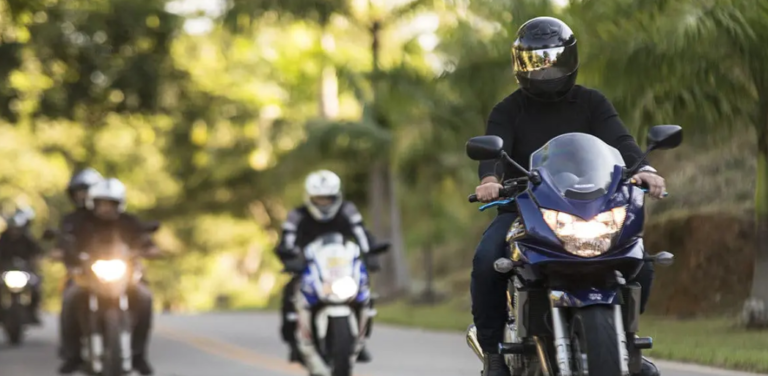Riding a motorcycle offers a thrilling sense of freedom and adventure but presents unique risks requiring attention and diligence to ensure safety on the road. Understanding and applying essential safety measures can significantly reduce the risk of accidents, helping motorcyclists enjoy their rides with peace of mind. In this article, a motorcycle accidents attorney St. Louis explores crucial safety tips that every rider should follow to enhance their safety and protect themselves from potential dangers.
Wear Protective Gear
The importance of wearing appropriate protective gear cannot be overstated. Helmets are a legal requirement in many regions and the most effective way to protect your head during an accident. Safety experts say wearing a helmet can significantly reduce the risk of head injury.
In addition to helmets, motorcyclists should invest in quality riding jackets, gloves, pants, and boots. These items are designed with materials that can withstand abrasions and impact, reducing the severity of injuries in case of an incident. Reflective elements on gear can also improve visibility, especially in low-light conditions, making riders more noticeable to other motorists.
Regular Maintenance Checks
A well-maintained motorcycle is crucial for safe riding. Regular maintenance checks can prevent mechanical failures that might lead to accidents. Riders should routinely inspect their motorcycles for any signs of wear or damage. This includes checking tire pressure and tread depth, ensuring all lights and signals function correctly, and verifying that brakes are in top condition.
Proper fluid levels, such as oil, brake, and coolant fluids, are essential for optimal performance. Scheduling routine professional inspections can further ensure that potential issues are addressed before they become hazardous.
Understand And Follow Traffic Rules
Adhering to traffic rules is fundamental to road safety. Motorcyclists should be fully aware of the laws and regulations that apply to them, including speed limits, lane usage, and right-of-way rules. Riding within speed limits is particularly important, as excessive speed reduces reaction times and increases the likelihood of losing control. Understanding the dynamics of lane splitting, where legal, and respecting the space of other vehicles on the road can also prevent collisions. By consistently following traffic rules, riders protect themselves and contribute to a safer environment for all road users.
Stay Visible
Visibility is a critical factor in preventing motorcycle accidents. Given the smaller size of motorcycles compared to other vehicles, riders may be less noticeable on the road. To enhance visibility, motorcyclists should always use their headlights, even during the day, and wear brightly colored or reflective clothing. Positioning is another aspect of visibility; riders should avoid lingering in blind spots of other vehicles and use their signals well in advance to communicate their intentions. By making themselves more visible, motorcyclists can reduce the risk of being overlooked by distracted drivers.
Practice Defensive Riding
Defensive riding is a proactive approach to safety that involves anticipating potential hazards and preparing for unexpected situations. Motorcyclists should always be aware of their surroundings, observing the behavior of other drivers, pedestrians, and road conditions. Maintaining a safe following distance provides ample time to react to sudden stops or obstacles. Riders should also be cautious at intersections, where many motorcycle accidents occur, by slowing down and ensuring eye contact with drivers when possible. Defensive riding empowers motorcyclists to make informed decisions that can prevent accidents before they happen.
Manage Weather Conditions
Adverse weather conditions can significantly impact motorcycle safety. Rain, fog, and high winds can reduce visibility and traction, increasing the likelihood of an accident. Motorcyclists should check weather forecasts before heading out and plan their rides accordingly. In wet conditions, reducing speed and avoiding sudden maneuvers can prevent skidding. Using anti-fog visors and clear lens goggles can enhance visibility in foggy conditions. Additionally, being aware of changing weather patterns and having a contingency plan can help riders safely adapt to unexpected weather challenges.
Continuous Skill Development
Finally, continuous skill development is essential for motorcyclists to enhance their riding abilities and adapt to new challenges. Enrolling in advanced riding courses can provide valuable insights into handling different road conditions, emergency braking techniques, and effective cornering strategies. These programs are designed to build confidence and improve a rider’s technical skills, contributing to overall safety. Regular practice and self-assessment can also help riders identify areas for improvement and refine their riding techniques.
Conclusion
Motorcycle safety combines preparation, awareness, and responsible riding practices. The motorcycle accidents attorney St. Louis says motorcyclists can significantly reduce their risk of accidents by wearing protective gear, maintaining their vehicles, adhering to traffic rules, staying visible, practicing defensive riding, managing weather conditions, and continuously developing their skills. Embracing these safety measures protects the rider and promotes a safer environment for everyone on the road.





